Samaaro + Your CRM: Zero Integration Fee for Annual Sign-Ups Until 30 June, 2025
- 00Days
- 00Hrs
- 00Min
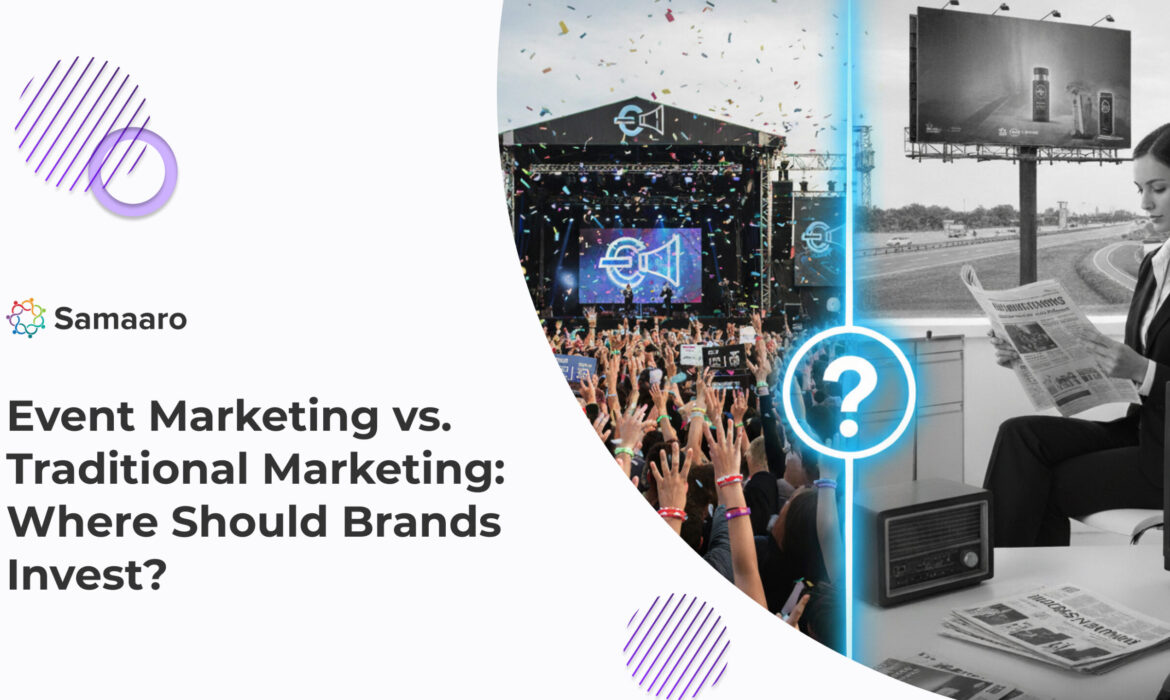
Each brand faces a budgeting question worth battling: Where should we allocate our marketing dollars to maximize our return? The decision is often between putting spending behind traditional campaigns (mass, digital ads) that have been historically used or investing in event marketing.
It’s a cyclical argument, with one delivering breadth of reach, while the other delivers depth of engagement. Generally, these informal arguments suggest that traditional ads are less expensive, while events are more expensive, but generate greater engagement.
In this blog, we’ll investigate the true value proposition of event marketing vs traditional marketing, clearly rationalizing how forward-thinking brands should structure these considerations to optimize verifiable trust, and measurable ROI.
For a deeper understanding of how event marketing strategies are evolving with data and technology, explore “Event Marketing 2025: Strategies That Deliver Real Results”. It offers actionable insights on aligning events with measurable business outcomes and audience engagement goals.
Traditional marketing refers to anything that is designed to reach a mass audience, whether through traditional television and print or programmatic display ads in digital form.
Strengths: The chief strength of traditional marketing lies in its Reach. Traditional channels, specifically mass media and targeted digital ad networks, enable brands to plan a message with the potential to reach millions of consumers immediately. Thus, it is well suited for broad brand awareness and product launches.
Weakness: Despite the mass reach, traditional marketing channels will, no doubt, struggle with two significant factors in 2026 – limited consumer trust and excessive ad fatigue. Consumers are inundated with vague, traditional advertising, and their trust has plummeted.
The consumer may see your banner ad or sponsored post in their feed, but seeing a paid advertisement or brand talking about their own business is rarely enough of an emotional connection or relationship to build the trust needed for a higher-value consumer conversion.
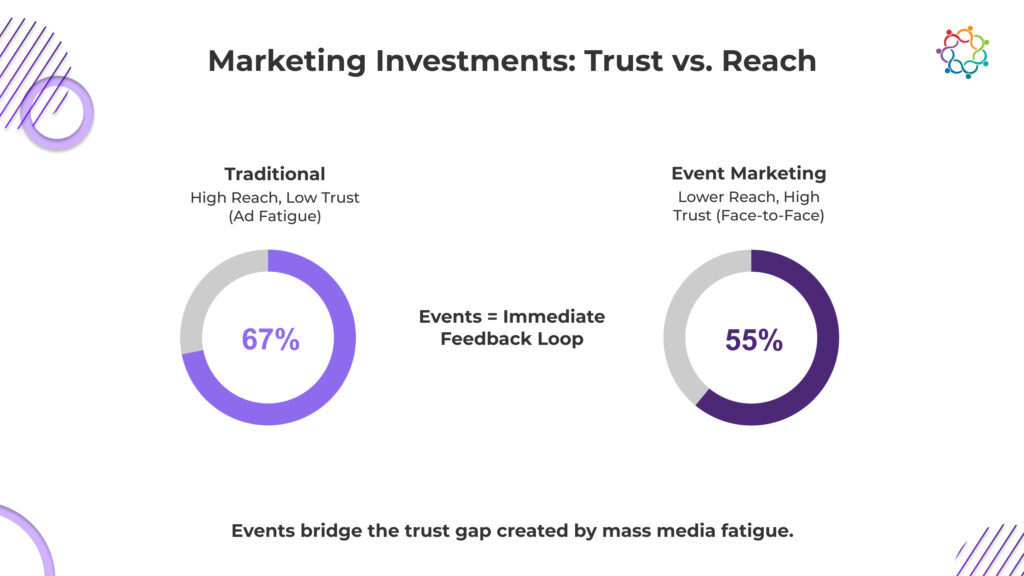
Event marketing is on the rise because it offers the exact antidotes to the shortcomings of traditional marketing, trust, context, and immediate feedback.
Example: A major BFSI (Banking, Financial Services and Insurance) brand indicated that while digital advertising generated a high quantity of leads, their quarterly investor meets using proprietary content and one-to-one getting provider sessions, were responsible for driving much higher-value commitments and long term client loyalty.
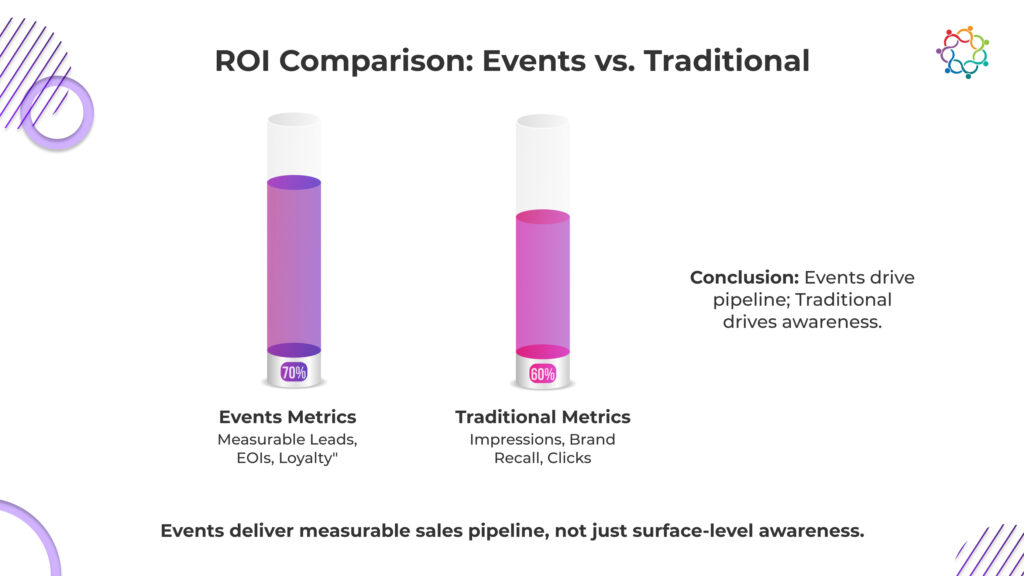
The most critical difference lies in what each channel measures and how that translates into verifiable ROI.
| Metric Type | Traditional Marketing | Event Marketing |
| Output Focus | Impressions, Clicks, Brand Recall | Measurable Leads, EOIs, Deals |
| Data Quality | Surface-level (anonymous clicks) | Deep-level (role, intent, session attendance) |
| Pipeline Impact | Primarily Top-of-Funnel (Awareness) | Mid-to-Bottom-of-Funnel (Conversion & Sales) |
| Trust Factor | Low | High |
Traditional marketing primarily generates awareness, metrics that are far removed from revenue. Events, however, generate traceable actions like Expressions of Interest (EOIs), demo requests, and signed deals. You can draw a direct line from an attendee’s registration and session attendance to their progression through the sales pipeline, making the ROI of event marketing significantly more transparent and defensible.
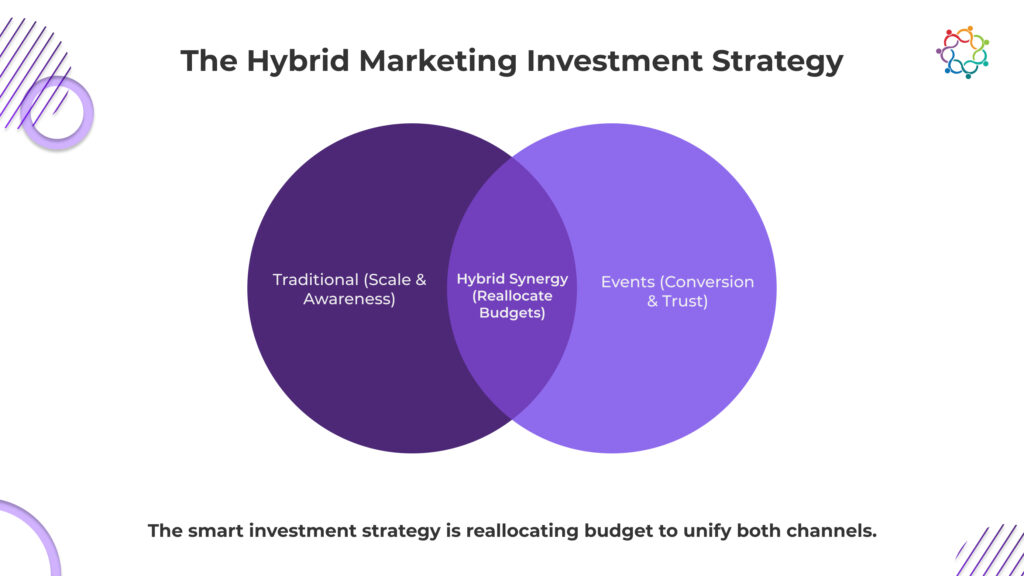
The most astute marketing investments for 2026 will not be made in one channel or another, but in the hybrid synergy of both.
Brands must realize that employing events vs. a digital campaign will not be competitors; they will be complements. Traditional digital channels are still vital for top of funnel broad based awareness, general interest in your brand and registrations in your event funnel.
Next, the event serves as your high-trust high conversion mechanism to convert those leads (exhibitors, attendees, partners, sponsors) into pipeline, and then post event, digital follow up creates retention.
In the future we all will have to strategically and budgetarily pull away from broad underperforming awareness ads to budget more into the technology that enables event data to be traceable to action.
To support the case for shifting budget towards events, Samaaro provides a robust marketing ecosystem that transforms event spend into measurable, revenue-oriented outcomes:
By harnessing these capabilities, Samaaro helps brands go beyond “just doing an event” to treating each event as a growth asset, with measurable touchpoints, conversions, and pipeline impact.
The marketing issue is not resolved by selecting one channel or the other, but rather by assigning them the correct role. Traditional marketing casts a wedge, but in 2026, event marketing is the trusted engine of growth that catches the most valuable, high-intent leads. Savvy brands know that trust is the currency of conversion.
Want to get the capabilities to maximize ROI from events? Check out Samaaro’s marketing attribution tools.

Built for modern marketing teams, Samaaro’s AI-powered event-tech platform helps you run events more efficiently, reduce manual work, engage attendees, capture qualified leads and gain real-time visibility into your events’ performance.
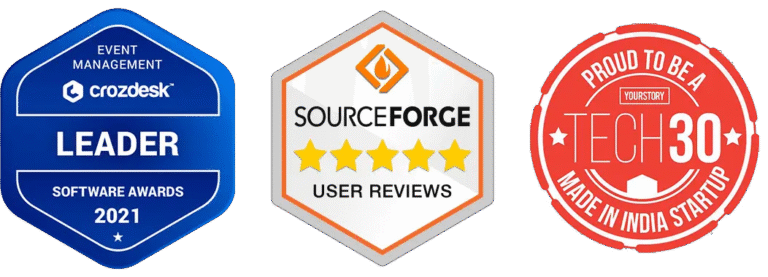
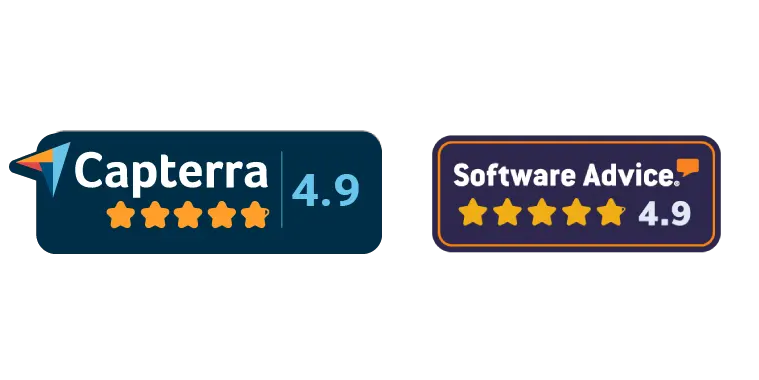
© 2025 — Samaaro. All Rights Reserved.